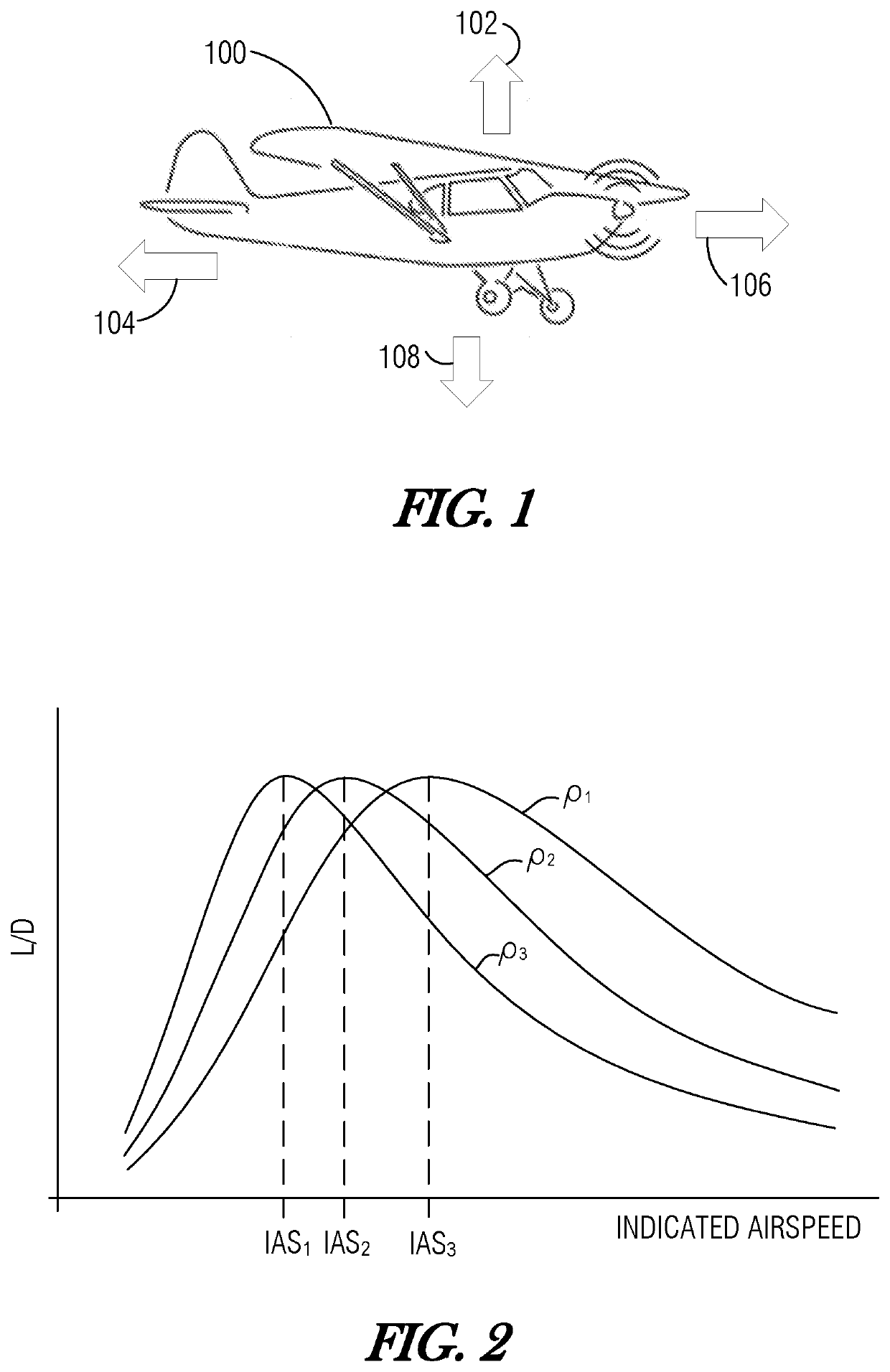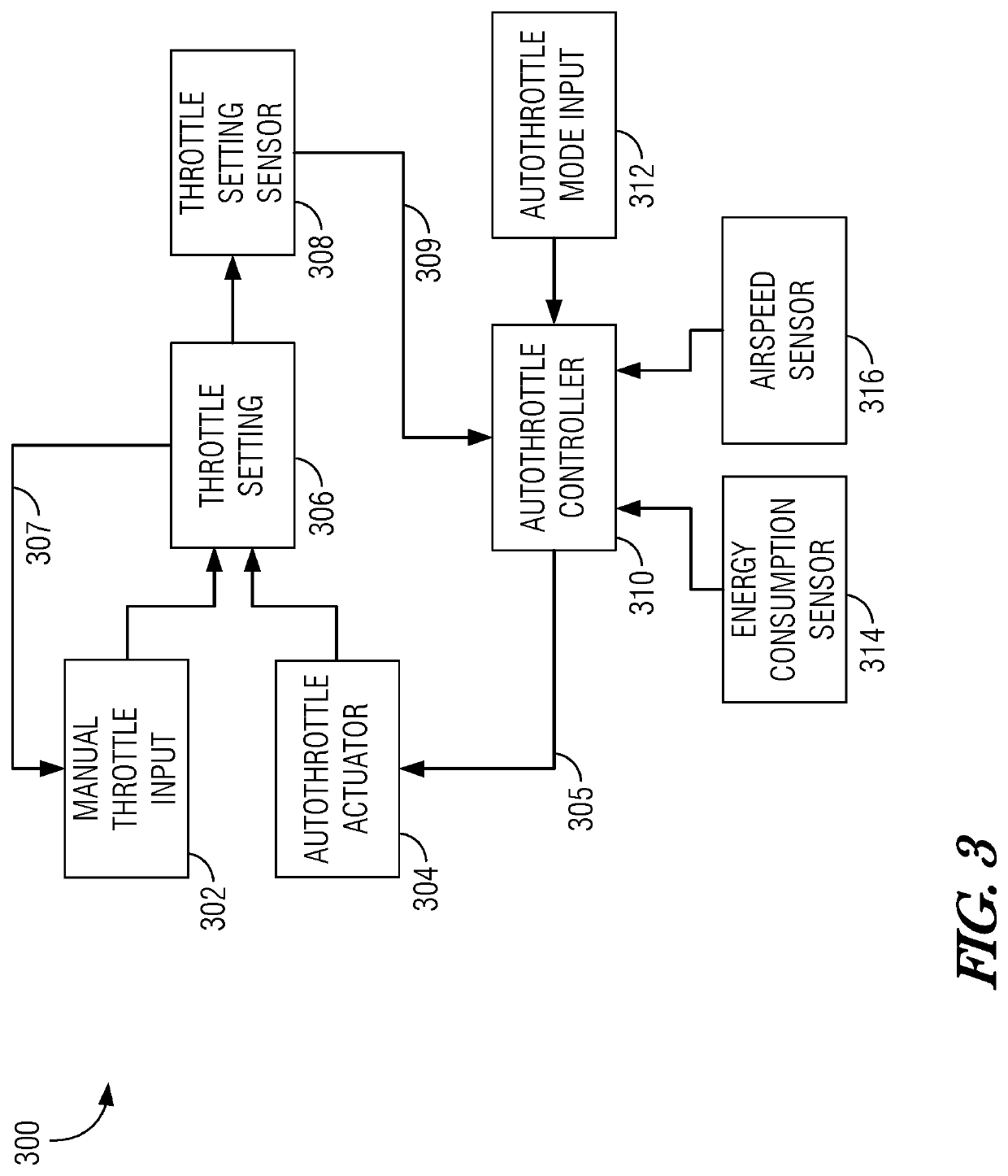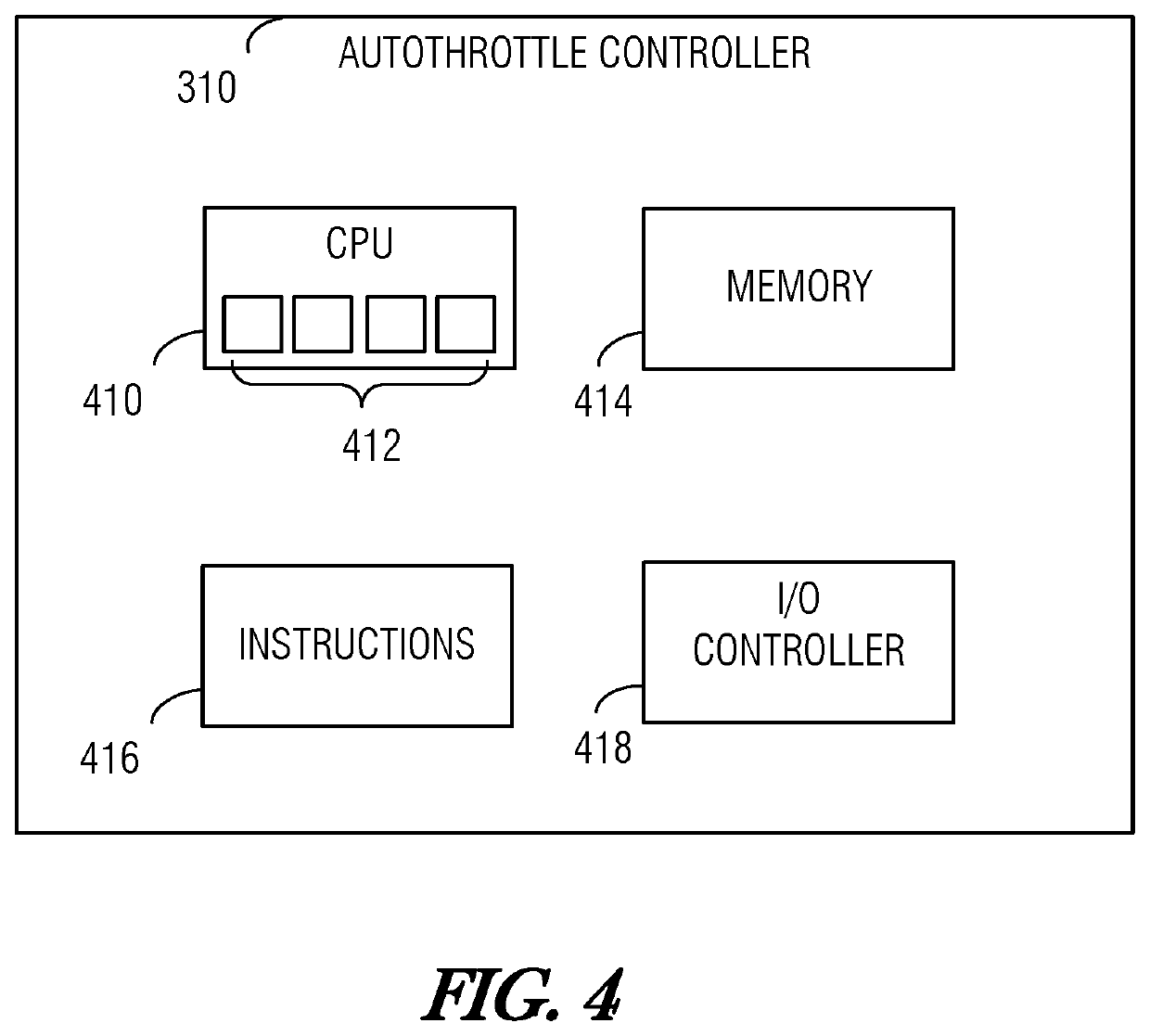Aircraft control for endurance and fuel economy
a fuel economy and endurance technology, applied in the field of endurance and aircraft control, can solve the problems of difficult and impractical performing such an aerodynamic analysis, calculation subject to weight measurement errors, etc., and achieve the effect of improving the airspeed and efficient aircraft operating poin
- Summary
- Abstract
- Description
- Claims
- Application Information
AI Technical Summary
Benefits of technology
Problems solved by technology
Method used
Image
Examples
Embodiment Construction
[0025]It should be noted that aspects of this disclosure are applicable in any powered aircraft, including traditional fuel-burning aircraft (propeller-driven, turboprop, jet, or other), electric aircraft (battery-, solar-, or fuel cell-powered), or hybrid-powered aircraft. In the following description, various embodiments are described in the context of one, or some, types of propulsion or propulsion-energy-delivery systems; however, it should be understood that principles of the described embodiments may be suitably applied to other types of aircraft having other propulsion or propulsion-energy-delivery systems with suitable adaptation which is within the skill of aircraft technologists.
[0026]FIG. 1 is a simplified diagram illustrating aircraft 100 and basic forces involved in its flight. Aircraft 100 generates lift 102 from its forward motion by directing air downward using primarily the shape and orientation of the body of aircraft 100 (e.g., its wings, fuselage, and control sur...
PUM
 Login to View More
Login to View More Abstract
Description
Claims
Application Information
 Login to View More
Login to View More - R&D
- Intellectual Property
- Life Sciences
- Materials
- Tech Scout
- Unparalleled Data Quality
- Higher Quality Content
- 60% Fewer Hallucinations
Browse by: Latest US Patents, China's latest patents, Technical Efficacy Thesaurus, Application Domain, Technology Topic, Popular Technical Reports.
© 2025 PatSnap. All rights reserved.Legal|Privacy policy|Modern Slavery Act Transparency Statement|Sitemap|About US| Contact US: help@patsnap.com



